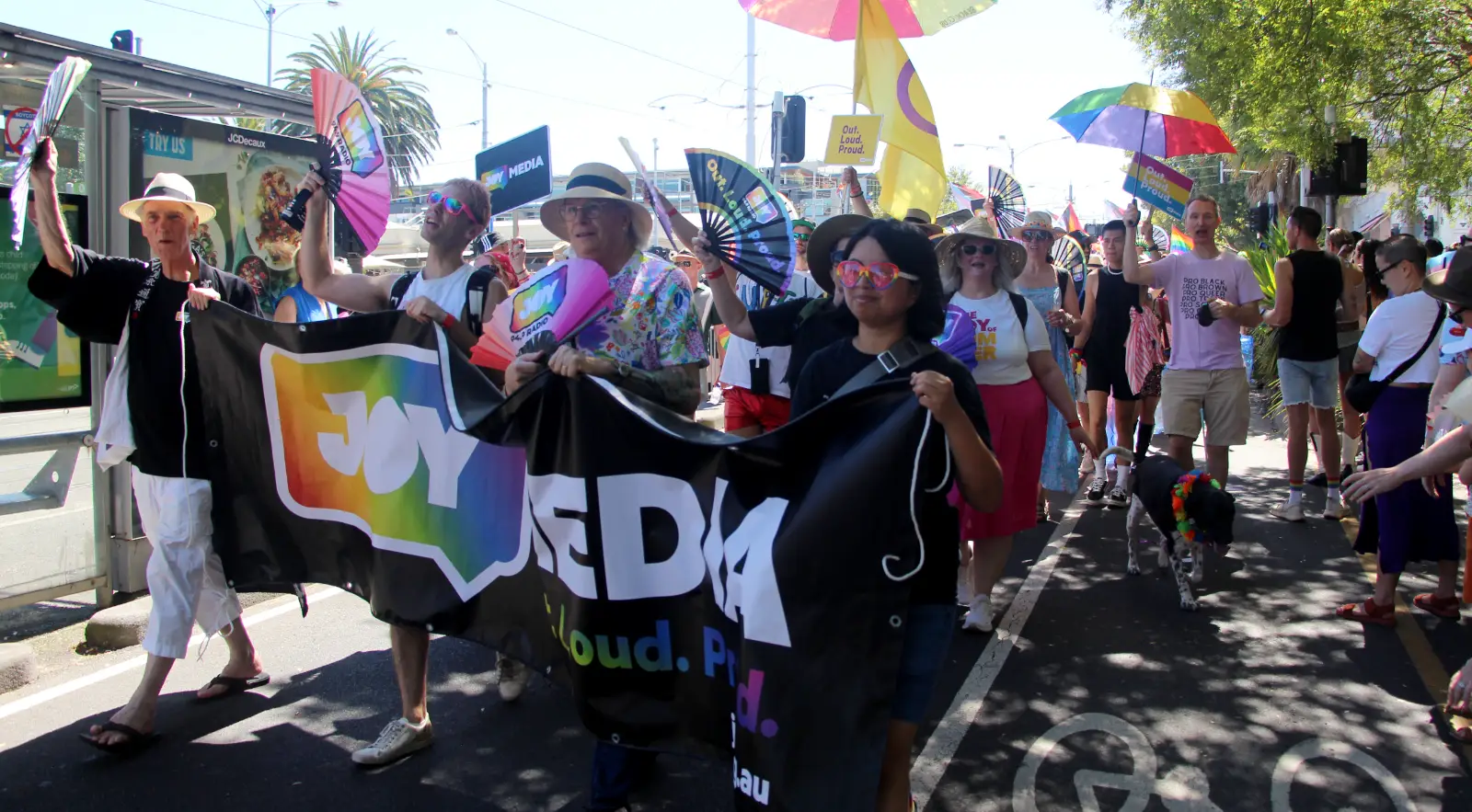Donations of $2 and over are tax deductible for individuals, you will receive a receipt for your donation.
Donate Online
Complete the payment form to pay with PayPal, VISA, Mastercard or American Express (AMEX 2% surcharge).
Donate by Phone
In Australia call 1300 JOY 949 (1300 569 949) and have your credit/debit card details on hand to donate over the phone.
If you are calling from overseas, please call +61 3 9267 6000.
Donate by Mail
Download a printable form and send through the Post:
JOY 94.9
Victorian Pride Centre
Level 1, 79-81 Fitzroy St
St Kilda Vic 3182
Links to the JOY Privacy Policy and Terms & Conditions can be found at the bottom of this page.
Leave a Bequest
What better gift can we give future generations of our rainbow community than the financial support needed to break down isolation and celebrate our culture, achievements and pride.
Your bequest will provide ongoing funding for JOY to create a vibrant station that serves our community for future generations.
Please pass the following wording onto your solicitor to assist you in preparing your Will:
“I bequeath to JOY Melbourne Inc for the purpose of providing a voice for the diverse LGBTIQA+ community (a specified sum), or (specified items), or (the residue of my estate) free of all duties, and the receipt of the Secretary or other authorised officer for the time being shall be a complete and sufficient discharge for the executor(s).”
For more information please contact: bequests@joy.org.au





